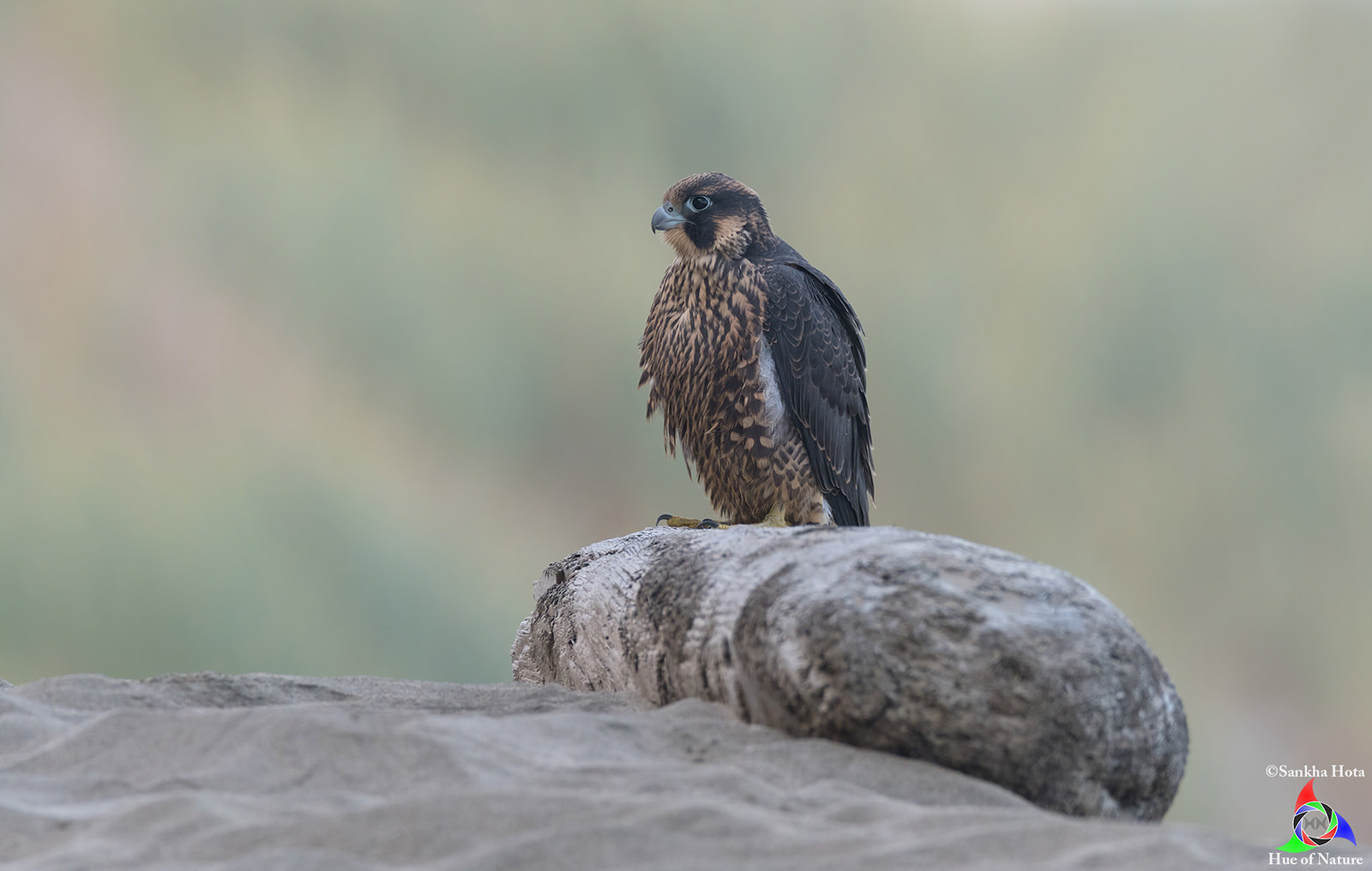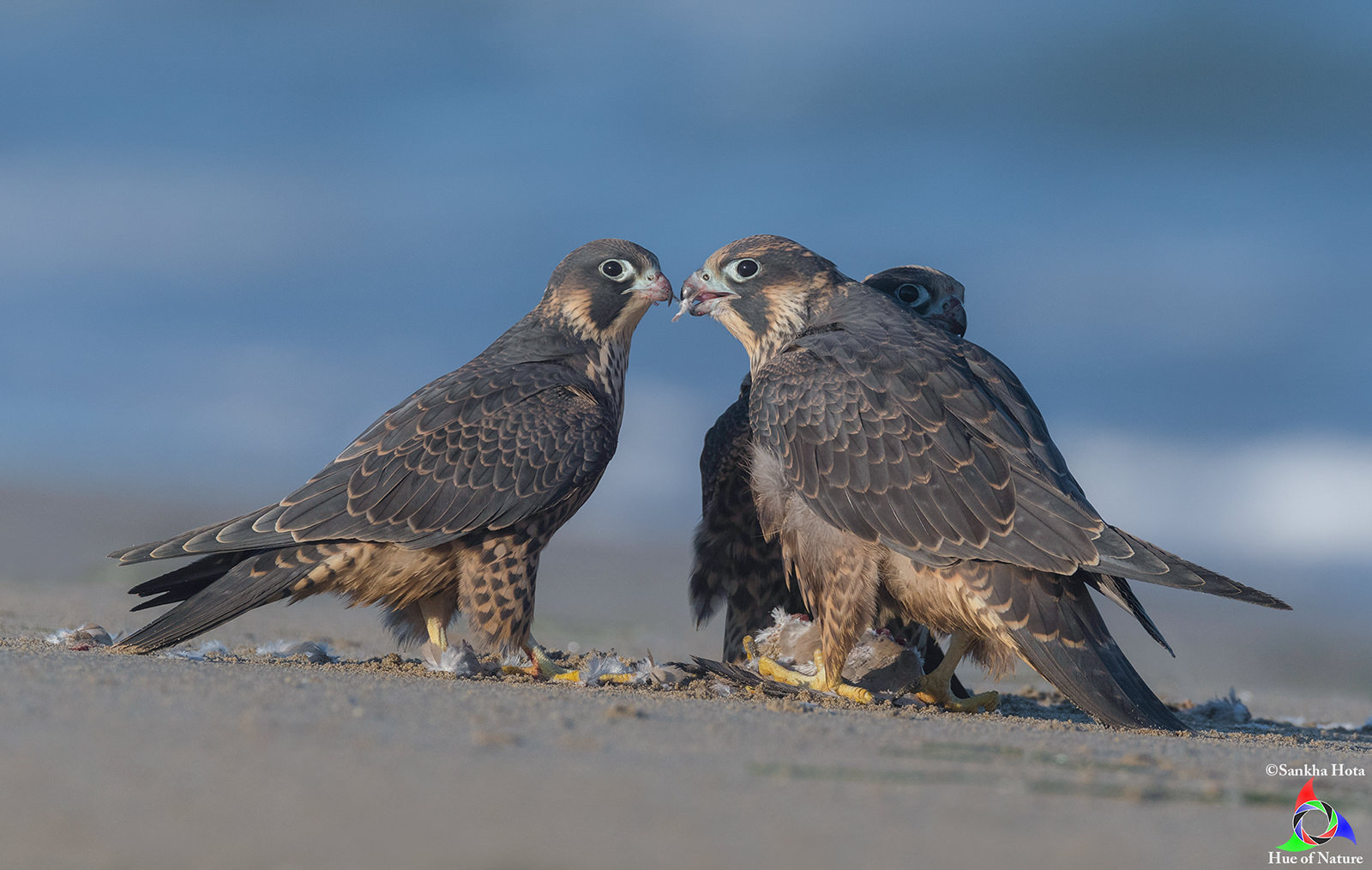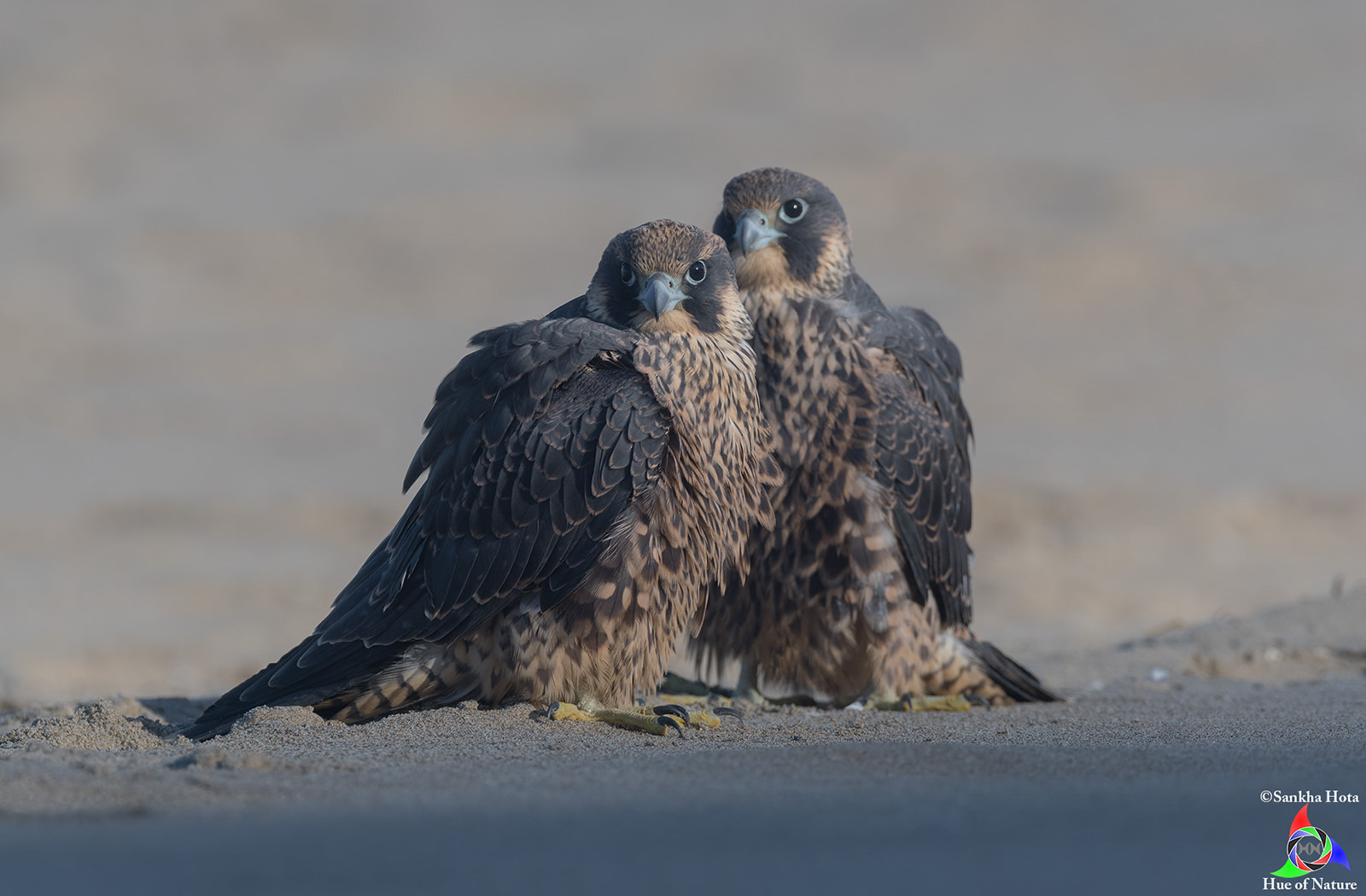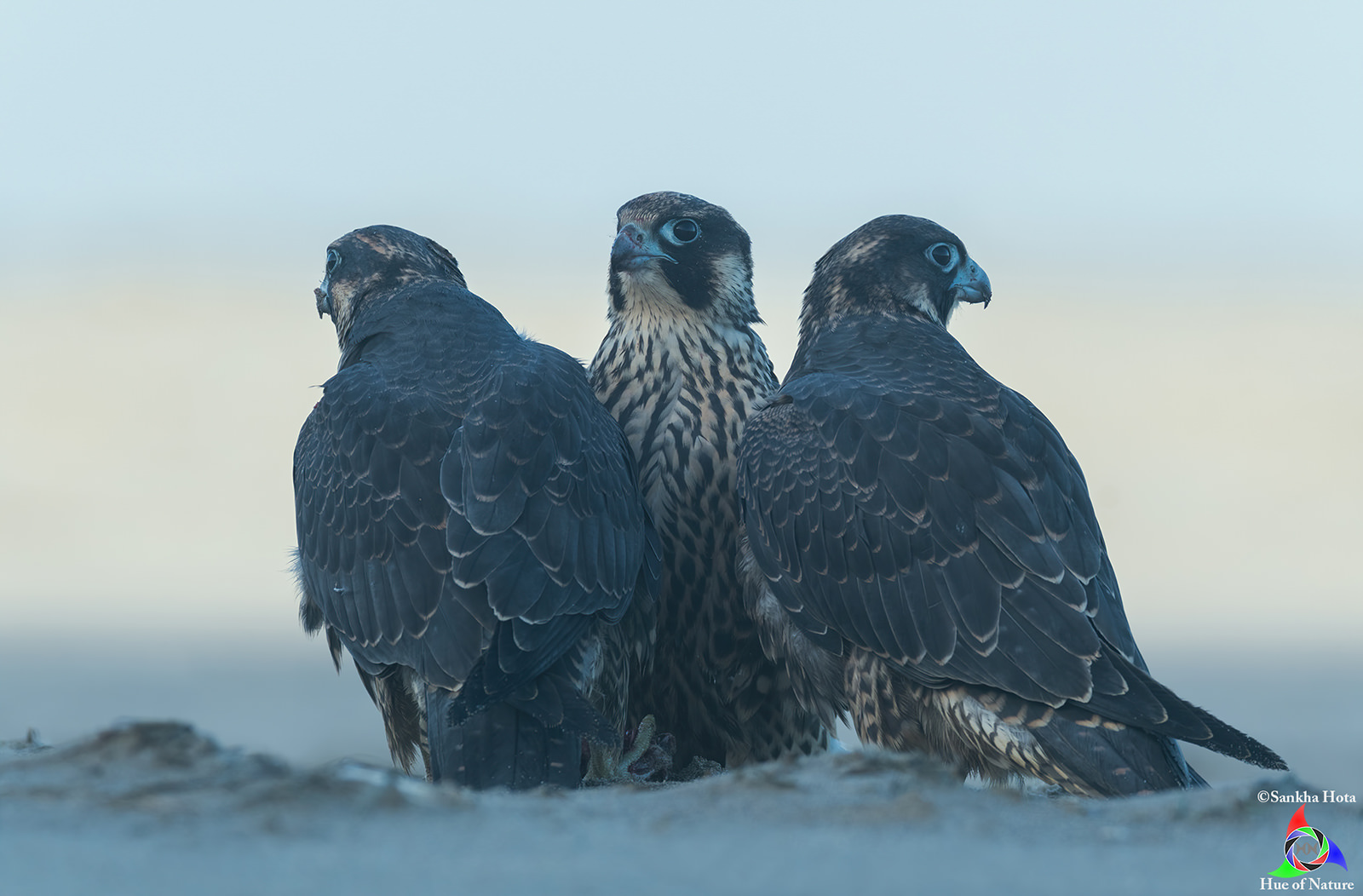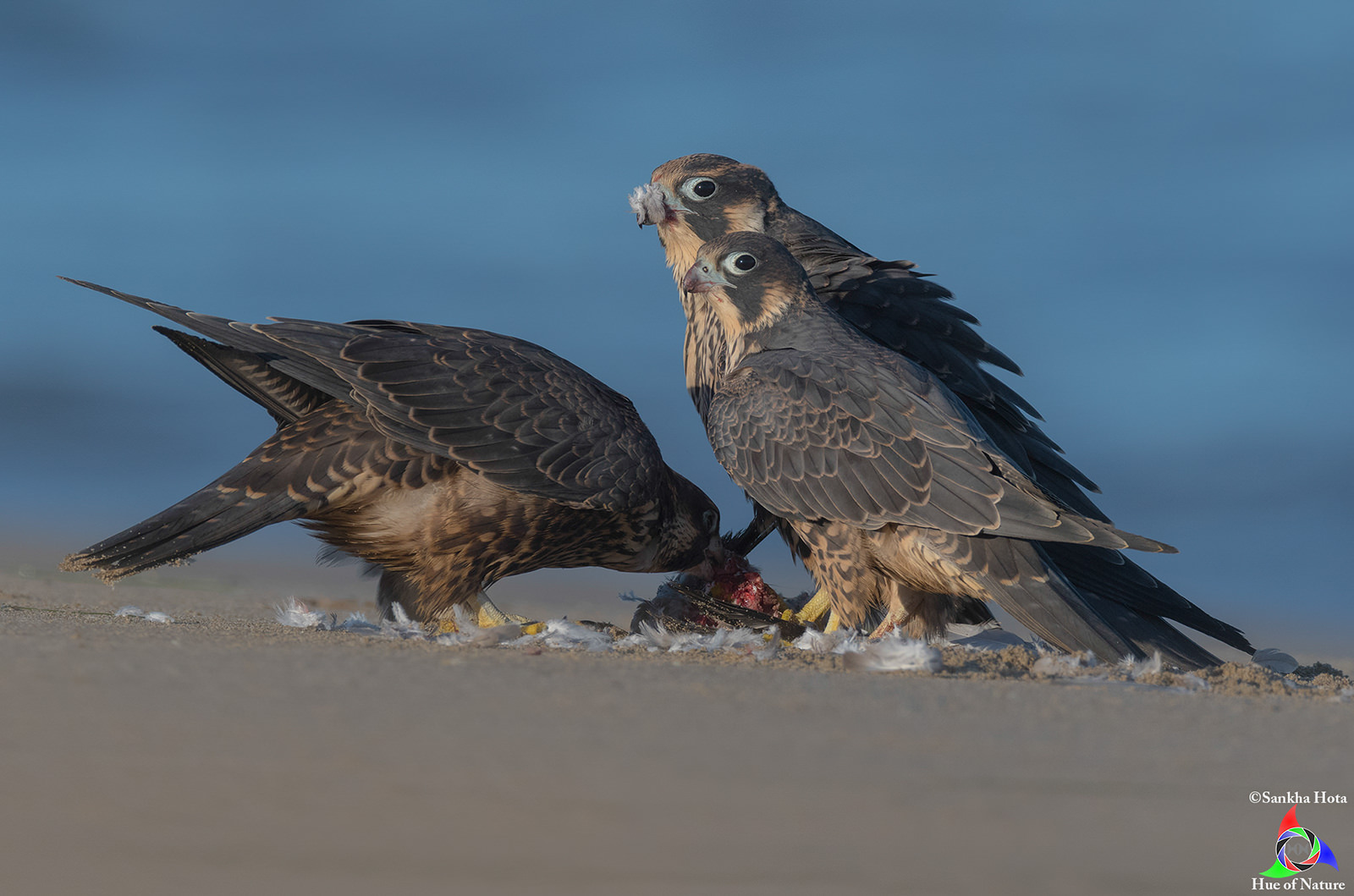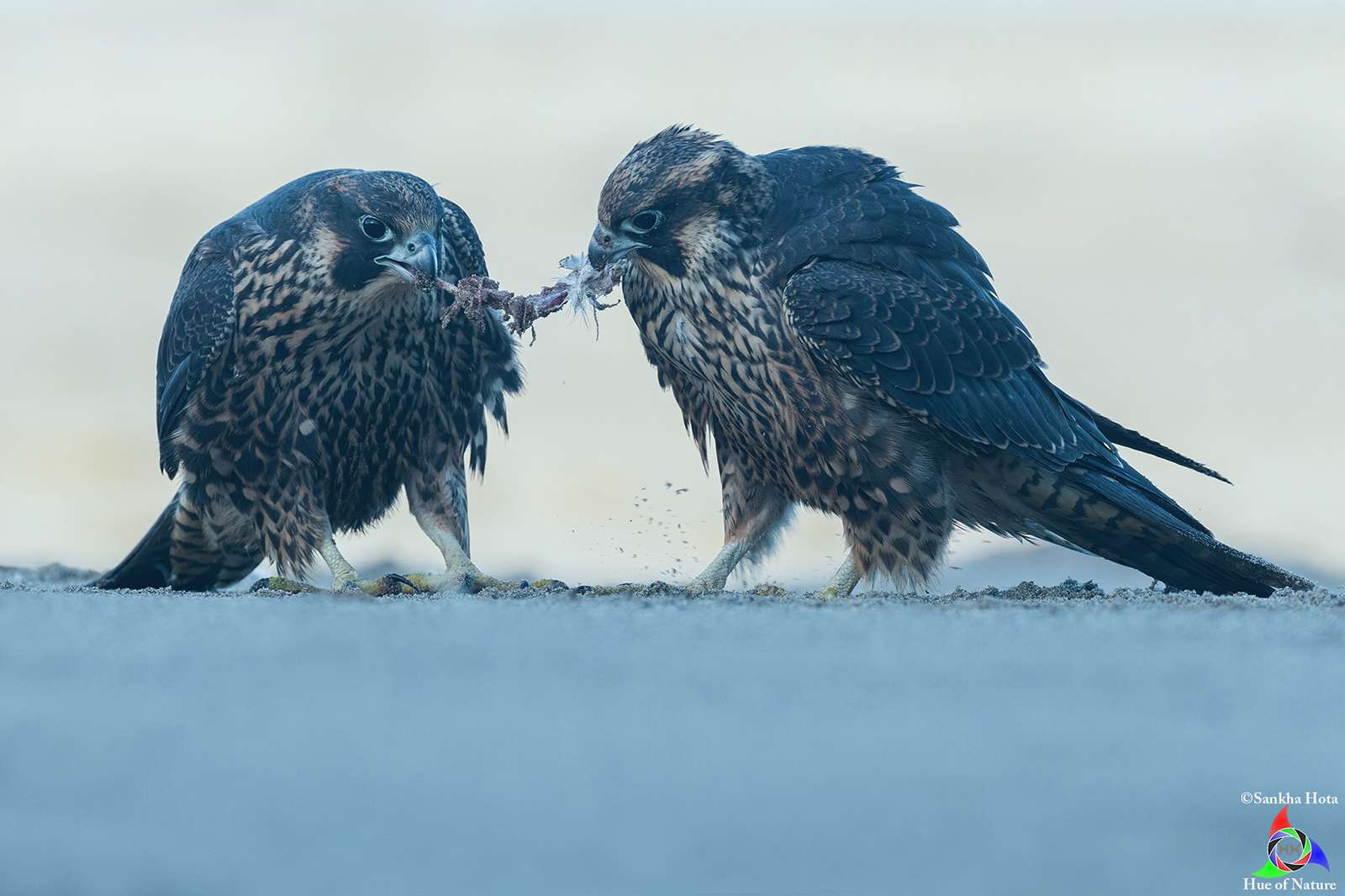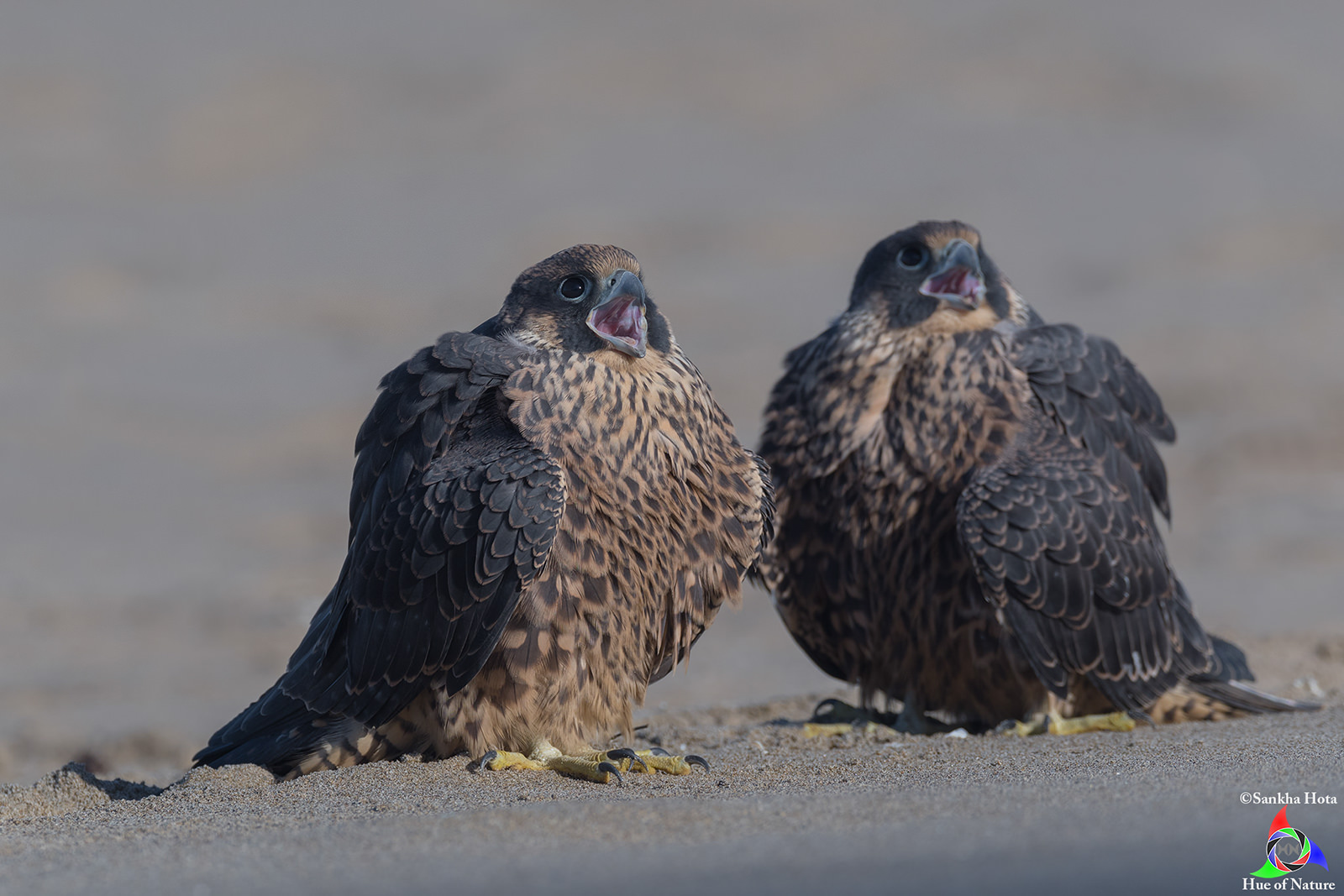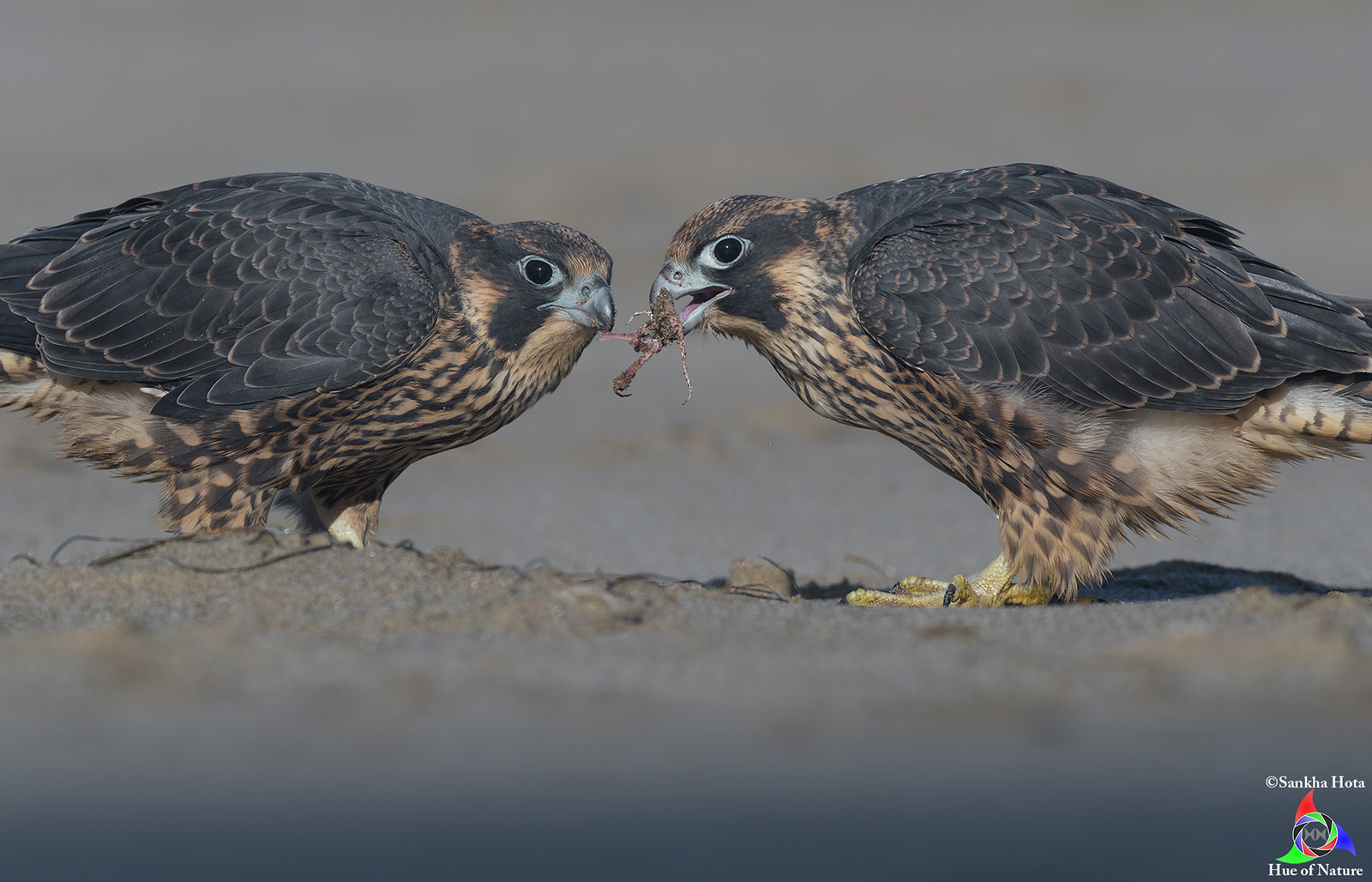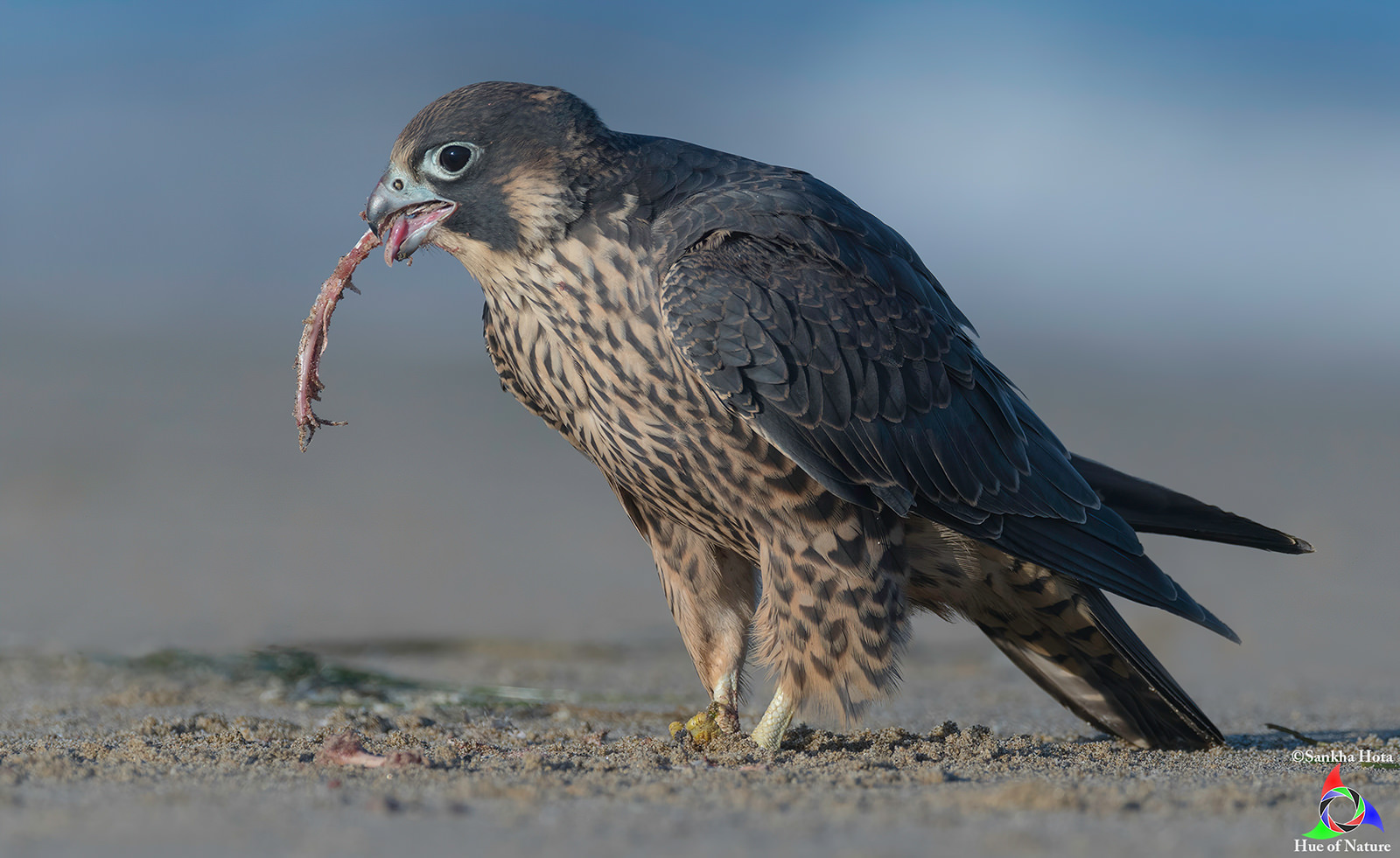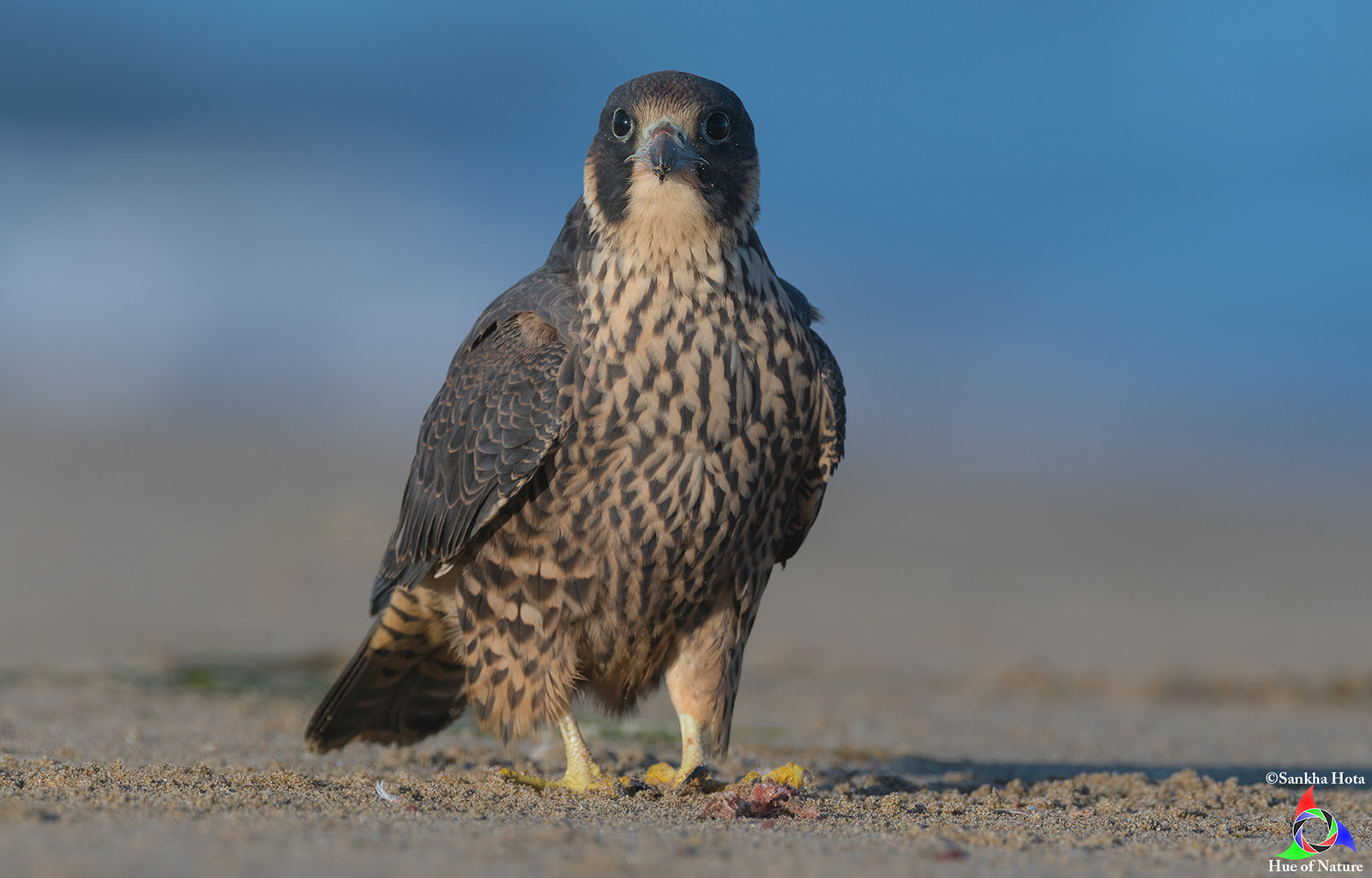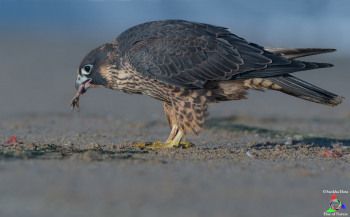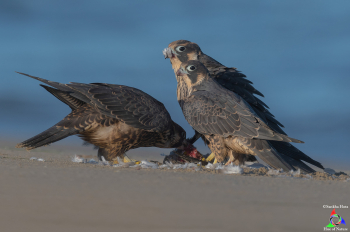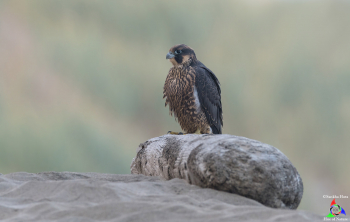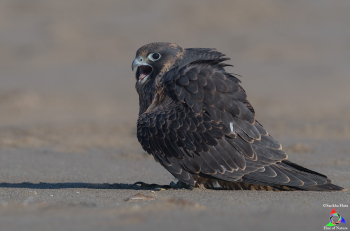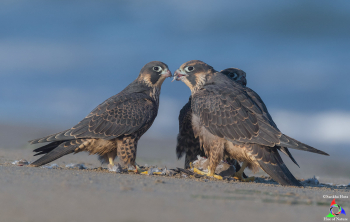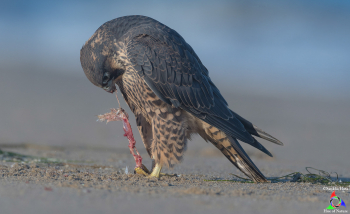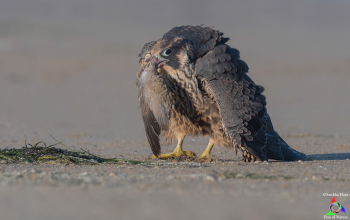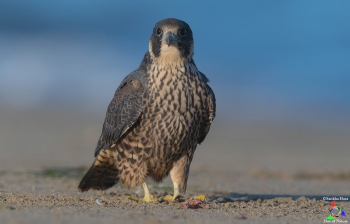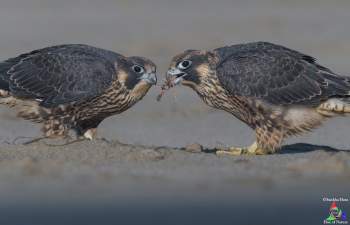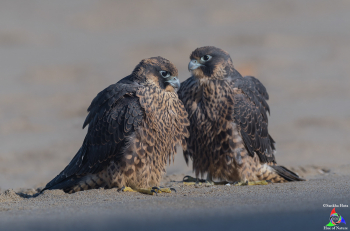Sand, Sea and Peregrines
For this seasonal adventure, the journey always starts early, from waking up sharp at 2:30 am and out on the road by 3:30, so that I can reach this pristine beach in the Marin County of California just before sunrise. It takes approximately 2 hours to drive up there and another 15 minutes to walk to the beach through a sandy trail. Fortunately, the notorious Bay Area traffic is not a problem at that time of the day and one can drive over the Golden Gate Bridge with hardly another car in sight, a rarity to say the least. It is the sheer excitement of what I am going to witness at the seashore of the mighty Pacific that fuels my exuberance every time I make these early-morning trips.
The question (or uncertainty) here is less so about what I am going to see, but more so about when or whether. This particular beach is home to a nesting Peregrine Falcon pair that has successfully brood, hatched and raised chicks for several years in a row. It is with almost certainty that I can tell you, the last three weeks of June is the best time of the year to spend the early mornings on this beach, especially if you are a wildlife enthusiast. Once the sun is up, the action begins and in some days, it just goes on and on.
One may wonder as to why am I so enthusiastic about this particular beach, given that Peregrines love to nest on sea cliffs (at least in coastal California) and there are several well documented places from the coast of San Diego down south, to Crescent City, Northern California and all the way up to Cape Flattery, WA, the north-westernmost point of the contiguous United States. Among the several nesting sites scattered throughout the Pacific coastline of North America, a couple of spots in Long Beach, California are particularly popular and draw photographers and birders from near and far.
Well, there are several reasons I prefer this beach for – firstly, it is easily accessible from the parking lot, yet never crowded during early morning, when there is a good chance of finding the Peregrine juveniles down on the beach rather than high on the cliffs. In fact, on many occasions I found them eating their breakfast on the beach. From a photographer’s perspective, it is a relatively unique scene to capture, all the while enjoying the tranquility of nature in a deserted beach. I also happen to prefer low angle, eye-level photography, and the sandy beach easily provides me that opportunity as well.
I clearly remember the very first time I found the falcon family. After one of my friends suggested to me this almost-guaranteed spot of nesting Peregrine sightings, I drove to the beach one fine morning. Although I had past experience of seeing and photographing an adult Peregrine falcon back in India, I was completely lacking the knowledge of their behavior. So, on this first trip, I did the most foolish thing ever. I found a long wooden log washed ashore and dragged that piece of wood for a few hundred meters near to the cliff-nesting site, hoping to set up a perch for the falcons. Not only my sheer stupidity and ignorance knew no bounds, my action as a wildlife photographer was grossly inappropriate as well. Had I not learnt quickly from this mistake, this one act of absurdity could have ruined my journey as an ethical photographer forever.
Anyway, after walking close to the bottom of the nesting cliff, and setting up the “fake stage” on the beach, I waited with the hope to see some action. Time flew by, nothing happened, and all I could only hear was the perpetual sound of waves, crashing on the seashore. After half-an-hour, the situation remained the same and I started to question myself. With further contemplation, I tardily realized how stupid of me it was to drag the tree branch and set up an artificial stage, thinking that the falcons will follow my hints. Nearly one and half hours later, when I could neither locate the falcons nor hear the callings of the hungry juveniles, I gave up and started walking back to my car.
I was nearly half way back down the trail, when suddenly I heard the unmistakable call of the juveniles from afar, fighting for the food in mid-air. This is a well known behavior of Hawks, Falcons, Harriers, and Kites. When the fledglings start flying out of the nest, the parents teach them how to catch a dead prey mid-air. This way, the juveniles initially learn some useful maneuvering skills in flight that eventually prepares them in becoming expert hunters. As I looked back following the source of the sound, I saw the last bit of the food exchange mid-air, before they disappeared behind the hill. Guessing that they might have landed on the beach, I rushed back to check out the situation.
As soon as I reached near the end of the trail, I could clearly see from a distance that they had indeed landed on the shore and were busy eating something. There were three juveniles. The distance between us was too far to take a good photograph. So I decided to close the gap as much as possible without making them feel threatened. At first, I sort of crouch-walked nearly half of the intermediate distance to close the gap, and then performed this peculiar sand-swimming that I myself call “Seal-walking”. I am pretty sure it would have been a fun experience for anyone watching me at that moment. Once I reduced the gap between us up to the point that they started looking back at me intermittently, I knew I was close to the border of their comfort zone. So I stopped moving any further and started taking pictures.
After a little while, the three young falcons started totally ignoring me and concentrated back on eating the fresh kill. This was my first ever sighting of juvenile Peregrine Falcons with food and as I mentioned, they were very recently fledged. In falcon families, the females are much larger in size than the males. Therefore, it was easy for me to distinguish the males from females. There were two females and one male on the beach that day. In the animal kingdom, the size difference naturally dictates the hierarchy in dominance-who gets to eat first. Obviously, the females were tearing apart the unfortunate bird, which I still could not figure out the ID of, and the male was patiently waiting for his turn. While in reality, it just took minutes for the hungry falcons to consume most part of the kill, to me it was happening in very slow motion.
I not only took as many pictures as I possibly could, but also I keenly observed their behaviors. The entire time the females were busy eating, the male did not get a single chance. Each time he tried to grab a piece, the females were either covering the kill with their wings or dragging it slightly away. However, there was no fighting between them and the females were happy to share between themselves. Once the best part of the prey was consumed, few bones and scraps were left behind for the male to eat. One female immediately flew away after finishing her meal, while the other female started playing with one of the wings of the kill. Only then, I finally could figure out what bird it was from the wing pattern; a poor Mourning Dove.
Soon after, the second female also left the scene, and I concentrated all my focus on the male. His patience finally paid off and he went through all the leftovers, eating all the scraps he could find. There was a partially eaten portion of the Dove’s leg and the male Peregrine was using all its strength to rip off the remaining flesh in it. While doing that, it stretched its body upwards a few times, giving me a unique standing-tall posture that I had not seen ever before. It took some time for the male to go through all the leftover meat, and after that, he moved on to consume all the bones, one at a time.
I knew that raptors eat everything except the feathers, but never before I witnessed a raptor eating bones. It was not at all a problem for the Peregrine to swallow the bones one by one. Towards the end, he gave me a glimpse of his most extraordinary eating habit. He simply swallowed the foot of the dove as a whole, which had literally no meaty or bony part at all. I realized how hungry the male was, and it was not that the parents were not providing enough for him; it was the female siblings who were eating most of the meal portions. My time with the male Peregrine was well spent at the end, as I could witness both his strengths and weaknesses.
Once all this was over, the male Peregrine flew off to join his sisters on a nearby cliff-side perch. I spent another hour simply observing their behavior. Time to time, they would fly out and harass other birds nearby. I observed them chasing an Osprey that was circling close to their perch. Even though the Osprey was twice the size of the Peregrines, it knew not to retaliate. The juvenile Peregrines may not have yet mastered the skill of hunting, but the confidence of dominance was hard-wired in them, as if they knew they are faster than anyone around, and in fact, they are in the making of the fastest animal on earth.
Last year, there were three juveniles. To my surprise I found four this year. As far as I could recognize, there were two females and two males. Possibly one male was a late hatch as he was significantly smaller in size than the other male. Successful hatching and raising of three chicks are quite common in the Peregrine world, but four is rather uncommon. I suspect the smaller male was a very late hatch and in these circumstances, its survival would become extremely difficult. I saw him missing the breakfast meal completely someday and continuously making begging calls for food. I hope it will eventually manage to survive. I cannot wait for the month of June next year, when I am hoping to see yet another generation of newly hatched Peregrine Falcons.

